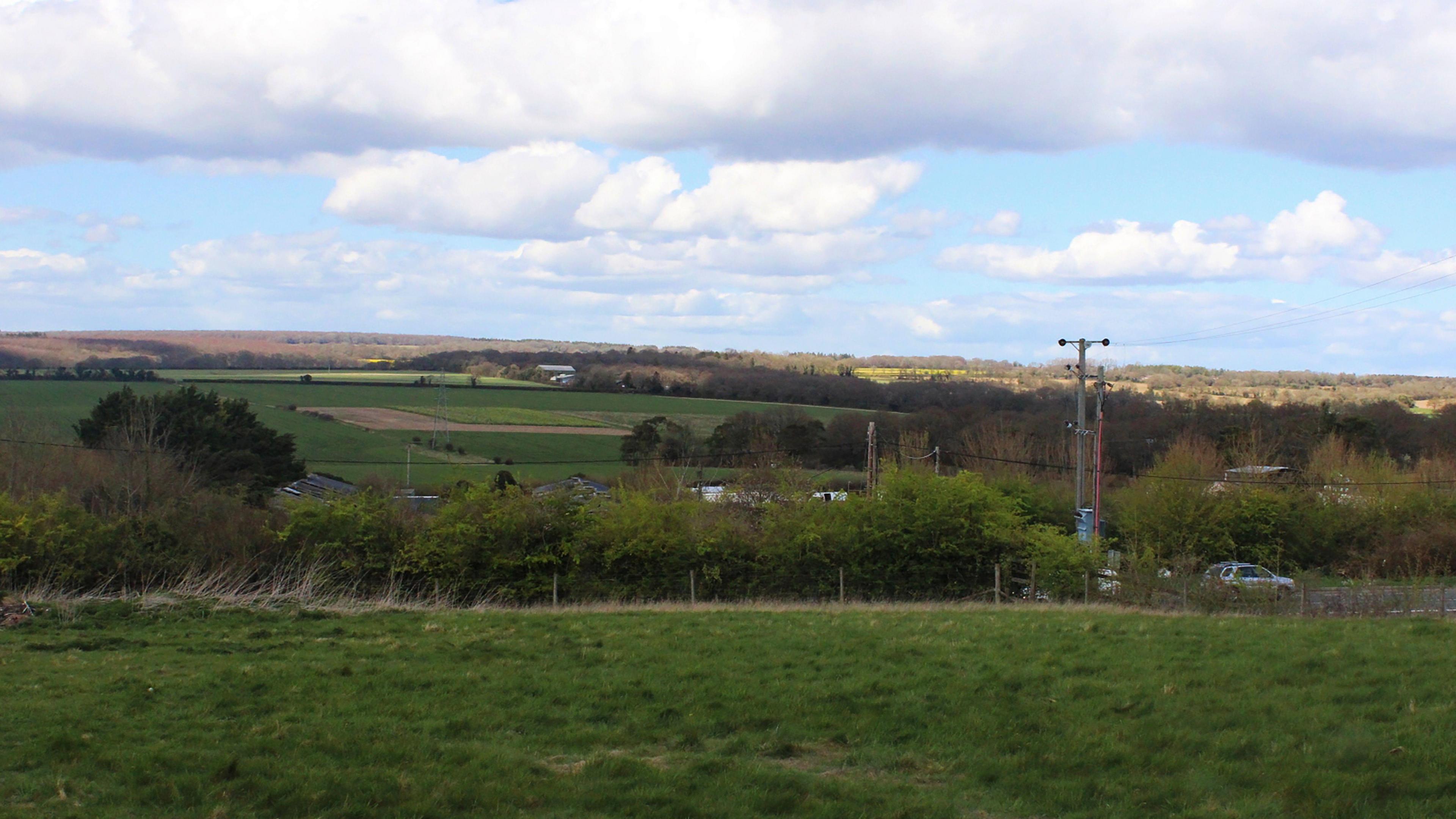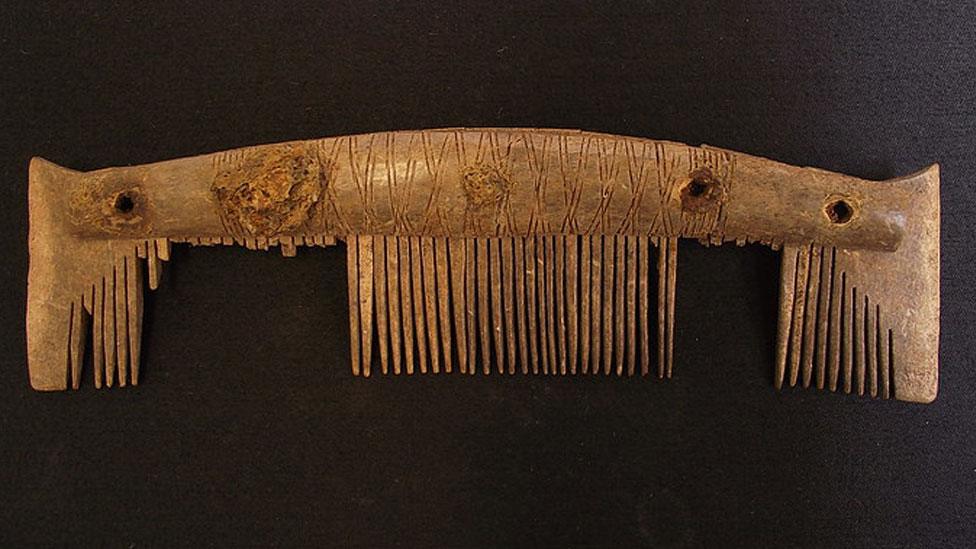Burial site for Dark Age king found, author claims

It is thought Cerdic reigned from around 519 to 534 AD and could be buried in Hampshire
- Published
The burial site of a Dark Age king has been discovered, one author believes.
Historical writer Paul Harper thinks he has identified the grave of Cerdic in Hampshire.
He says the site, located near Andover, has emerged more than 1,000 years after it was named in an ancient royal charter.
Cerdic is believed to be the first king of Wessex, however, his existence has been widely disputed.

Paul Harper hopes the landowners will give permission for archaeologists to survey the site
There are limited records on Britain in the aftermath of the Roman Empire, it is an era often referred to as "the Dark Ages".
It is thought Cerdic reigned from around 519 to 534 AD.
"The main source for Cerdic's reign is the Anglo-Saxon Chronicle and that kind of record is confusing," Mr Harper admitted.
But the author said he has found evidence which he claimed was more reliable - an ancient royal charter dated to 900 AD.
He said it showed Edward the Elder, king of the Anglo Saxons, granted roughly 11,000 acres to Winchester Cathedral - land which now largely makes up St Mary Bourne parish.

The barrow was situated near an ancient road and “was a very public statement of power", says Mr Harper
A map in the charter featured various landmarks to show the boundary of this land, including "Ceardices Beorg" in old English, that translates as "Cerdic’s Barrow".
Mr Harper said he found a burial site at this exact location in Hampshire County Council’s historic records.
"The discovery of the burial site is fascinating because it brings this story to life," he said.
Mr Harper added although the site has been ploughed and flattened, aerial photography from the 1960s and 70s showed traces of a barrow measuring 72ft (22m) in diameter, with a height of up to 12ft (4m).
This “was a very public statement of power" and "a warning to his enemies in modern-day Wiltshire", the historian said.
He hopes to gain permission from the landowners for archaeologists to survey the site.
"He's probably one of the most interesting figures from the early medieval period, alongside King Arthur," Mr Harper says.
"I believe that Cerdic was involved in warfare for control of the New Forest and Solent region."
He added the discovery of a grave could prove "Cerdic was not just a product of fantasy".
Follow BBC South on Facebook, external, X (Twitter), external, or Instagram, external. Send your story ideas to south.newsonline@bbc.co.uk, external or via WhatsApp on 0808 100 2240, external.
Related topics
More on historic discoveries
- Published16 April 2024

- Published2 April 2024
